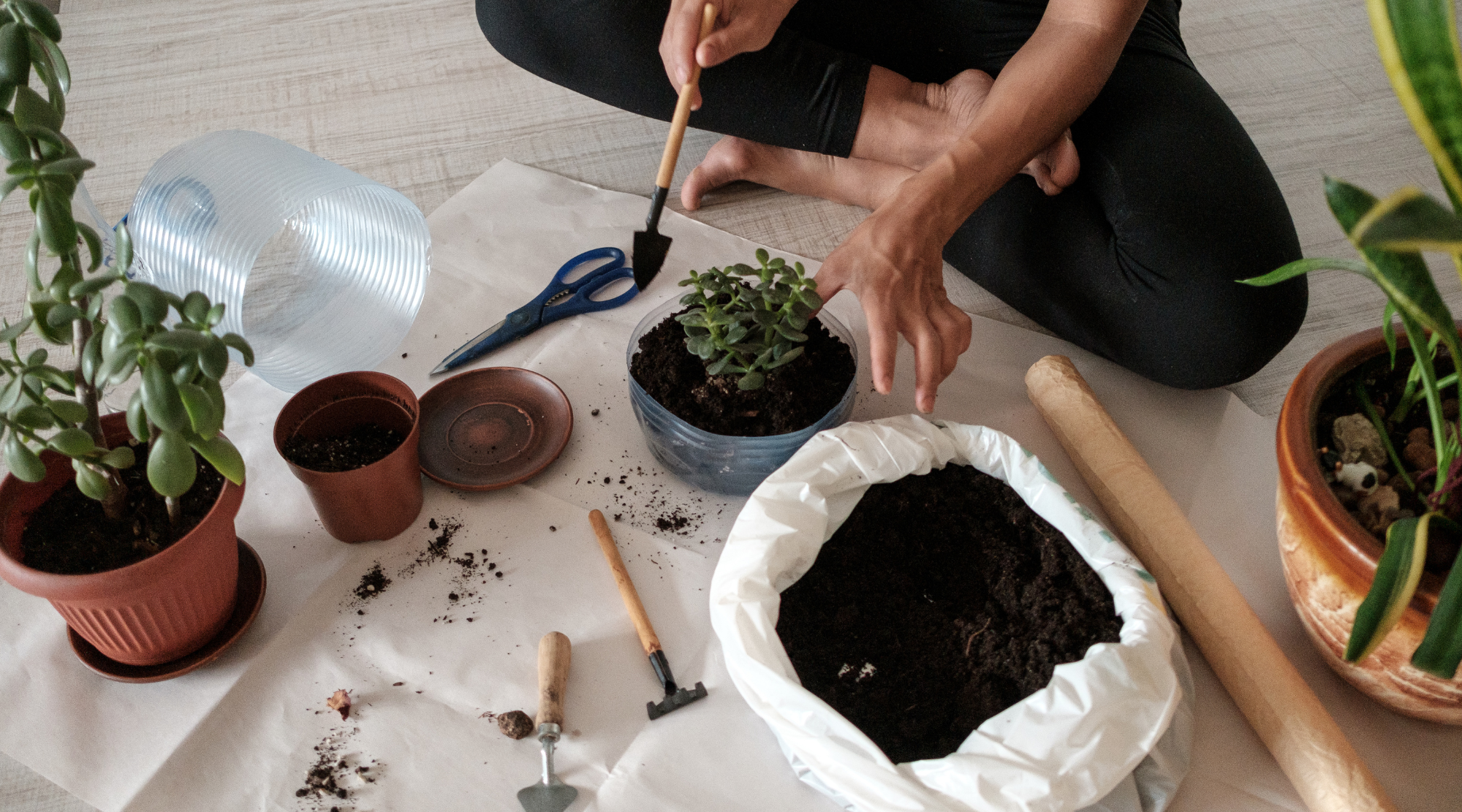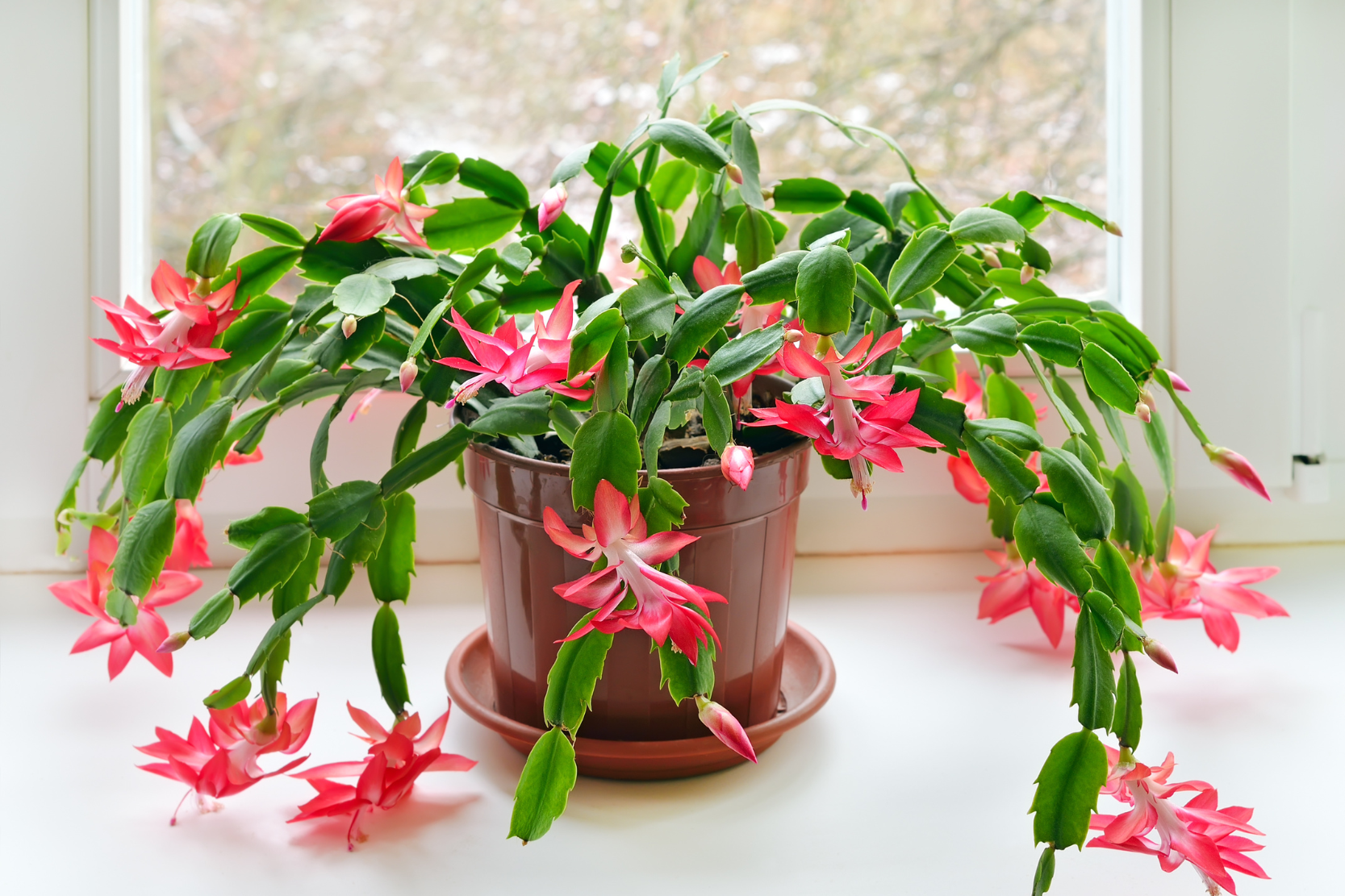Introduction
Indoor cacti are a fantastic choice for anyone looking to add a touch of nature to their home without the hassle of high-maintenance plants. Known for their resilience, low water needs, and striking appearances, cacti can thrive in a wide range of indoor environments. And when they bloom, they add a stunning splash of color to your home, making them a rewarding plant to grow.
This guide will walk you through the best practices for growing indoor flowering cacti, offering low-maintenance tips to keep your plants happy and healthy. Whether you’re new to cactus care or an experienced plant lover, this guide will make caring for these beautiful plants easy and enjoyable.
Why Choose Indoor Flowering Cacti?
Cacti have gained immense popularity as indoor plants, thanks to their hardy nature and ability to thrive on minimal care. Their thick, water-storing stems make them ideal for busy homeowners or people who travel frequently. Additionally, their wide variety of shapes, sizes, and vibrant blooms provide visual interest, making them perfect for interior design.
Flowering cacti, in particular, are a stunning addition to any home. With their ability to produce vibrant flowers in shades of pink, red, yellow, and white, they can brighten up any space. And the best part? These blooms often appear with minimal effort, provided the right conditions are met.

Types of Flowering Cacti for Indoors
Not all cacti flower indoors, but many species are well-suited for indoor environments and can bloom with the right care. Below are some of the most popular indoor flowering cacti:
1. Christmas Cactus (Schlumbergera)
The Christmas Cactus is known for its beautiful, tubular flowers that bloom around the holiday season, giving it its festive name. It produces flowers in a variety of colors, including pink, red, white, and orange. Unlike traditional cacti, it thrives in slightly more humid conditions and prefers indirect light.
Key Benefits:
- Produces stunning blooms in winter
- Thrives in low to medium indirect light
- Easy to propagate from cuttings
Pro Tip:
To encourage blooming, keep the plant in a cool, dark place for about 6 weeks before its flowering season, then move it back into bright, indirect light to trigger blooming.
For more in-depth care instructions on Christmas Cacti, check out this guide on Christmas Cactus care.
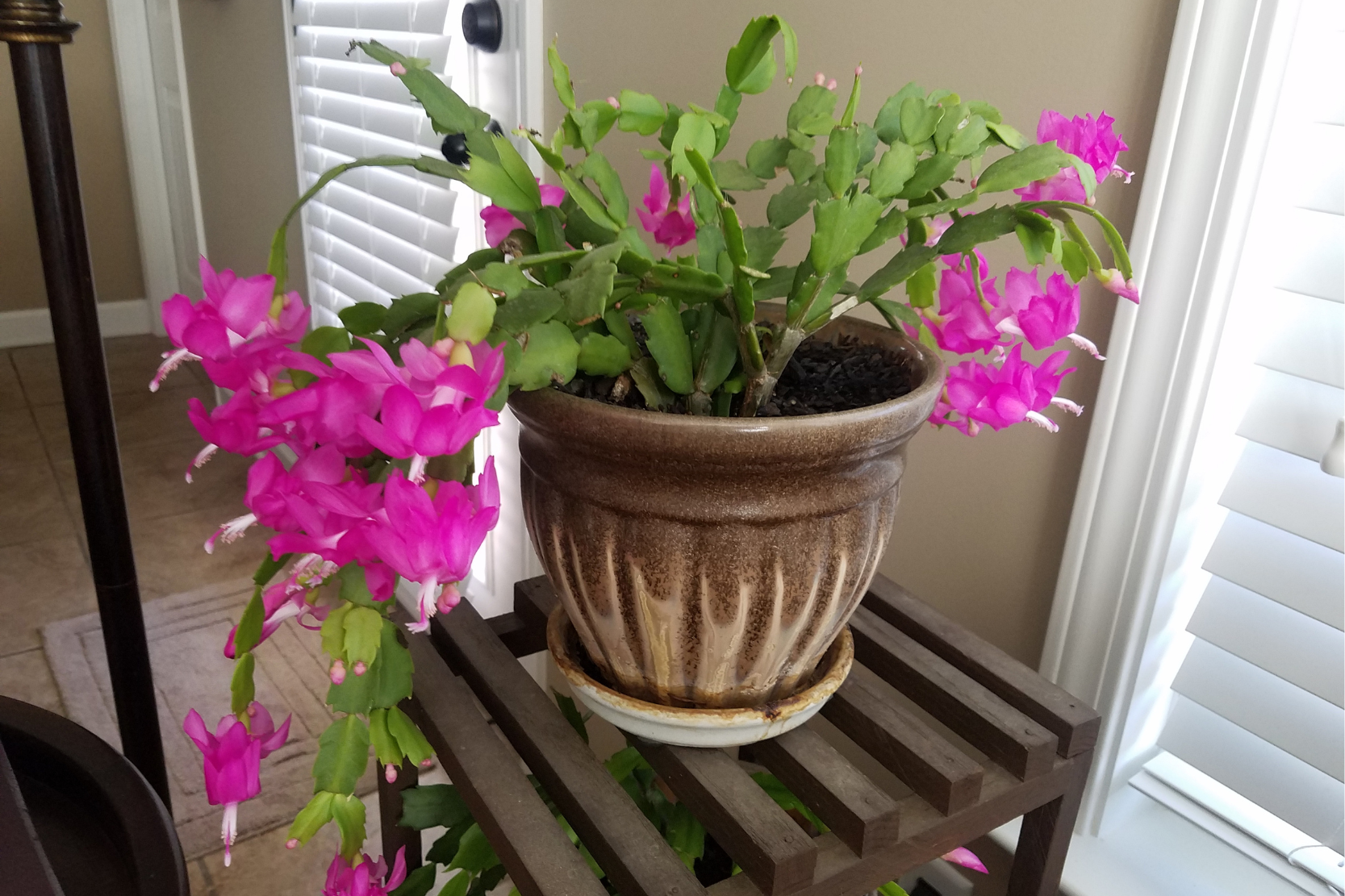
2. Moon Cactus (Gymnocalycium mihanovichii)
The Moon Cactus is easily recognizable for its bright, colorful top, which is grafted onto a green base cactus. The top can be red, yellow, pink, or orange, and while it doesn’t flower as readily as some other cacti, its vibrant appearance is enough to brighten any indoor space.
Key Benefits:
- Bright, colorful appearance
- Compact and perfect for small spaces
- Low water requirements
Pro Tip:
Since the top of the Moon Cactus lacks chlorophyll, it relies on the green base for photosynthesis. Keep it in a bright, indirect light environment to keep it healthy.
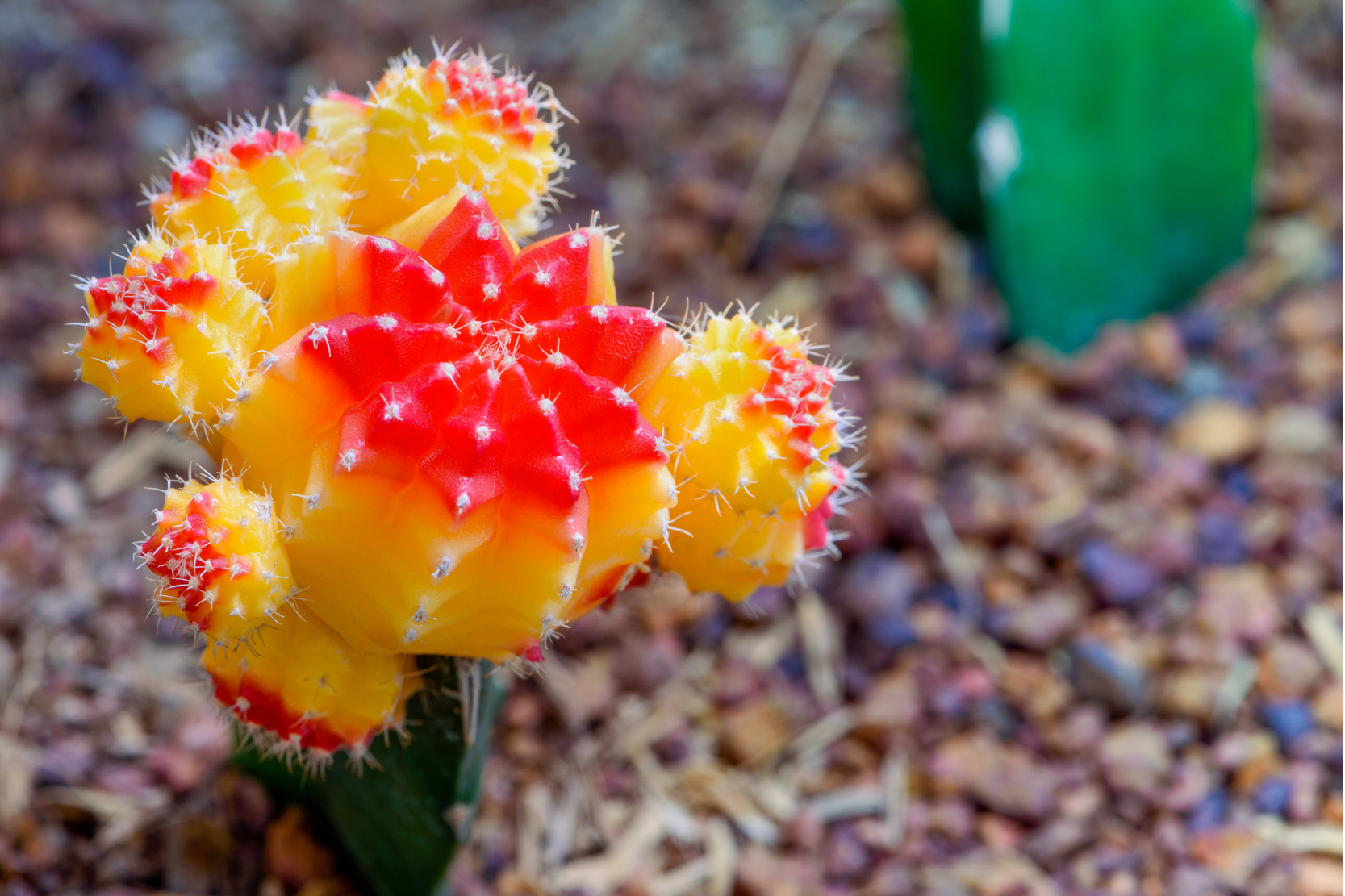
3. Easter Cactus (Rhipsalidopsis)
Similar to the Christmas Cactus, the Easter Cactus blooms in the spring, producing star-shaped flowers in a range of colors from pink to red. It prefers indirect light and slightly more water than other desert cacti, making it a good option for indoor growers who want to see vibrant springtime blooms.
Key Benefits:
- Blooms in spring with star-shaped flowers
- Thrives in indirect light and moderate humidity
- Easy to care for indoors
Pro Tip:
To encourage blooms, reduce watering slightly in the winter months, then resume regular watering in early spring as the cactus prepares to bloom.
Another popular variety is the Thanksgiving Cactus, which also produces beautiful blooms and thrives in similar indoor conditions.
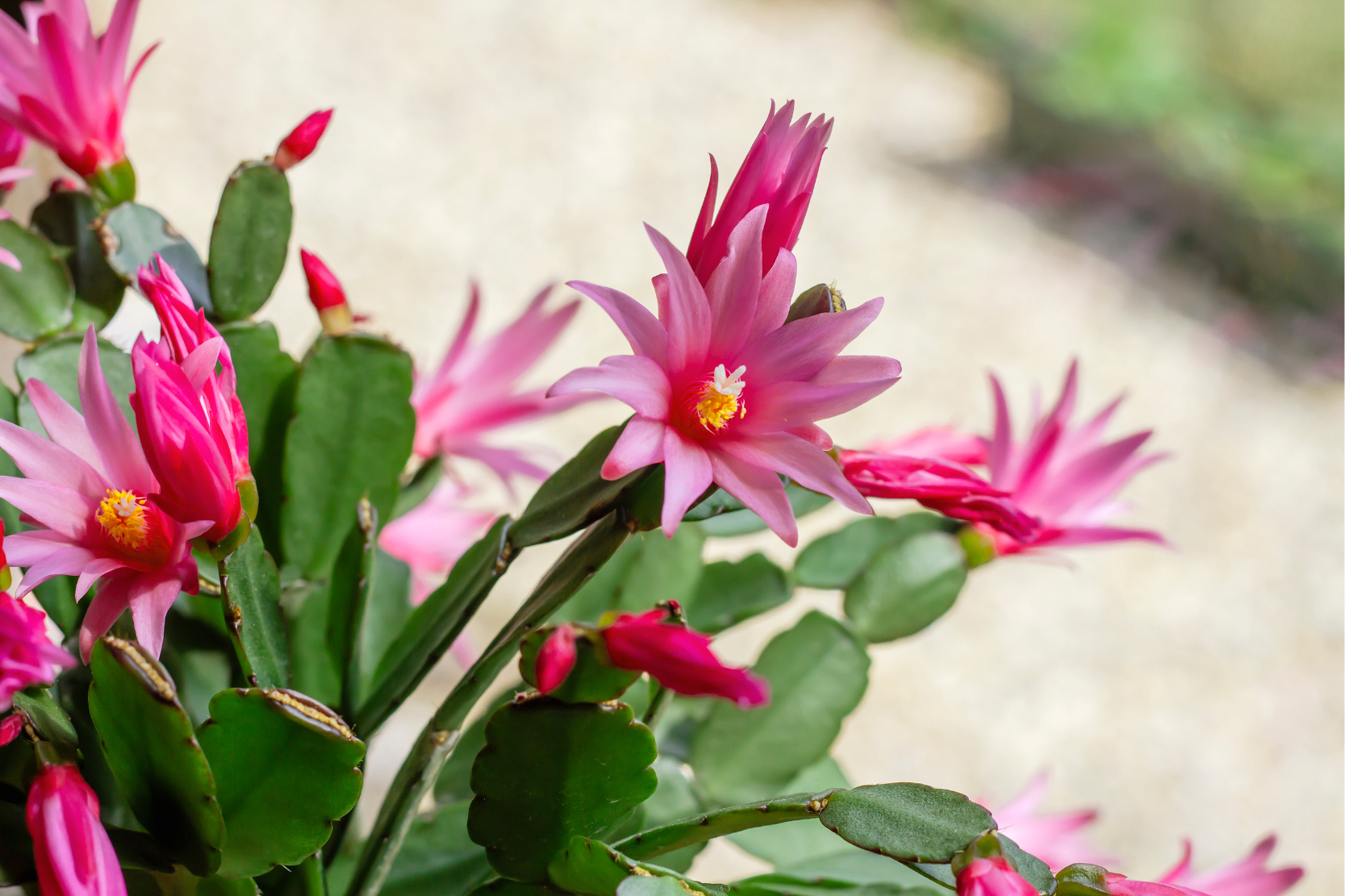
4. Parodia (Parodia magnifica)
The Parodia is a round, barrel-shaped cactus that is known for its large, bright yellow flowers that bloom during the summer months. It’s a low-maintenance plant that prefers bright light and requires very little water, making it perfect for busy homeowners.
Key Benefits:
- Beautiful yellow blooms in the summer
- Very low maintenance
- Compact and easy to grow indoors
Pro Tip:
Place your Parodia in a bright spot, ideally near a south-facing window, and be sure to allow the soil to dry out completely between waterings.
If you’re looking for more stunning cactus varieties to brighten up your home, check out our list of 15 Beautiful Cacti.
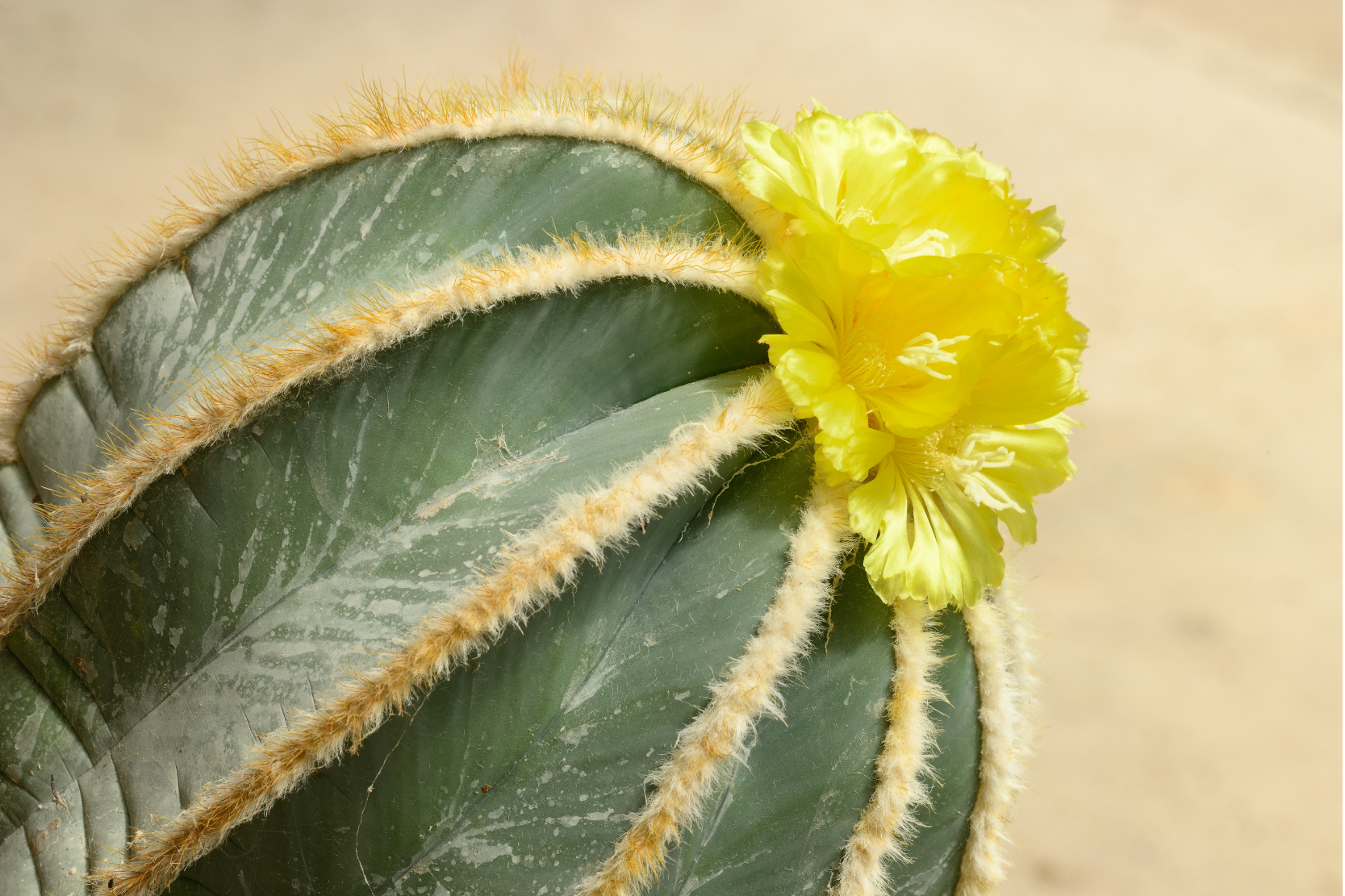
The Ideal Growing Conditions for Indoor Cacti
One of the key reasons cacti are so easy to care for is their ability to thrive in low-maintenance conditions. However, there are a few factors that are essential for ensuring your indoor flowering cacti stay healthy and bloom regularly.
1. Light Requirements
Most cacti prefer bright, indirect light, making them ideal for indoor spaces with plenty of natural light. Placing them near a south or west-facing window is perfect for giving them the sunlight they need to thrive. However, avoid direct, intense sunlight for extended periods, as this can scorch the plant.
Pro Tip:
If you don’t have access to natural light, consider using a grow light to supplement the light requirements for your cacti, especially during the winter months.
2. Watering
Watering is one of the most important aspects of cactus care, and it’s essential to avoid overwatering. Cacti store water in their stems, which allows them to survive long periods of drought. For most indoor cacti, watering once every 2-4 weeks is sufficient. Let the soil dry out completely between waterings to prevent root rot.
Pro Tip:
Water your cactus more frequently during its growing season (spring and summer) and reduce watering during the dormant winter months.
For a comprehensive guide on cactus care, including more detailed watering and soil tips, check out our complete Cactus Care 101 guide.

3. Soil and Potting
Cacti need well-draining soil to thrive. A cactus or succulent-specific potting mix is ideal, as it provides the proper drainage and aeration needed for the roots. You can also add sand or perlite to regular potting soil to improve drainage.
Pro Tip:
Ensure your pots have drainage holes to prevent water from sitting at the bottom, as this can lead to root rot.
4. Temperature and Humidity
Cacti are native to warm, arid environments, so they prefer indoor temperatures between 65-80°F (18-27°C). Most cacti thrive in average household humidity levels, which tend to be on the lower side. They are very sensitive to cold drafts, so keep them away from windowsills or doors that may get chilly in winter.
Pro Tip:
If your cactus is exposed to temperatures below 50°F (10°C) for prolonged periods, it may stop growing and become damaged. Always move your cactus away from cold windows during the winter months.
5. Fertilization
Although cacti don’t need frequent feeding, applying a diluted cactus fertilizer during the growing season (spring and summer) can promote healthier growth and more abundant blooms. Use a fertilizer specifically formulated for cacti and succulents, which has a lower nitrogen content and higher phosphorus and potassium levels.
Pro Tip:
Fertilize your cacti every 4-6 weeks during the growing season and refrain from fertilizing during the dormant winter months to avoid overfeeding.
Common Problems and How to Avoid Them
Despite their hardy nature, indoor cacti can face a few common problems if their basic needs are not met. Below are some common issues and how to prevent or address them:
1. Overwatering and Root Rot
One of the most common mistakes in cactus care is overwatering. Cacti store water in their stems and can go for extended periods without needing more. Overwatering can lead to root rot, which often causes the plant to become mushy and collapse.
Solution:
Allow the soil to dry out completely between waterings, and make sure your pot has proper drainage. If your cactus starts to rot, cut away any soft, discolored parts and let the plant dry out before replanting it in fresh, dry soil.
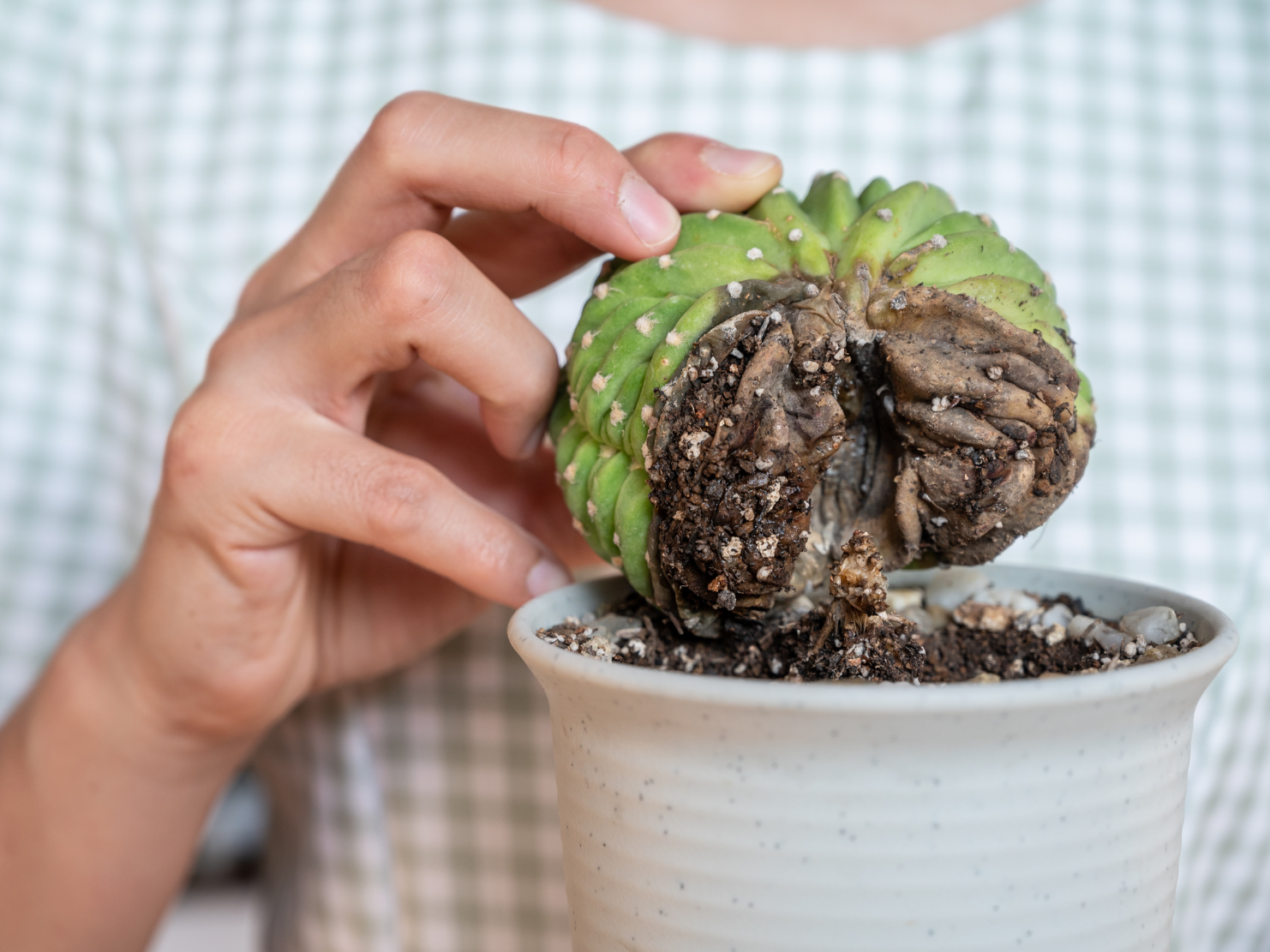
2. Insufficient Light
If your cactus starts to grow tall and thin or bends toward the light, it’s a sign that it isn’t getting enough sunlight. Cacti need bright light to maintain their shape and strength.
Solution:
Move your cactus to a brighter location, ideally near a south or west-facing window. If natural light is limited, consider using a grow light to provide the necessary exposure.
3. Pests
Although cacti are generally resistant to pests, they can occasionally attract spider mites, mealybugs, or scale. These pests can weaken the plant and affect its ability to thrive and bloom.
Solution:
Regularly inspect your cactus for signs of pests, such as white cotton-like substances (mealybugs) or small webs (spider mites). Use insecticidal soap or a mixture of water and rubbing alcohol to remove pests, or wipe the plant with a cotton swab dipped in the solution.
How to Encourage Your Cactus to Bloom
Getting a cactus to bloom indoors can be one of the most rewarding aspects of cactus care. While many cacti will flower naturally with the right care, others may need a little extra encouragement. Here are some tips to help your cactus produce its stunning blooms:
1. Provide Plenty of Sunlight
Most flowering cacti require bright light to bloom. Placing your cactus in a sunny spot, such as a south-facing window, will give it the light it needs to produce flowers. Insufficient light can lead to poor growth and delayed flowering.
2. Adjust Temperature and Watering in the Winter
Many cacti need a period of dormancy in cooler temperatures to trigger blooming. During the winter months, keep your cactus in a cooler room (around 50-55°F or 10-13°C) and reduce watering to once a month. This rest period signals to the cactus that it’s time to prepare for blooming in the spring or summer.
3. Fertilize During the Growing Season
Feeding your cactus with a bloom-boosting fertilizer during the growing season (spring and summer) can encourage more abundant flowers. Choose a cactus fertilizer with a balanced mix of nutrients, and apply it every 4-6 weeks during the active growing months.

4. Be Patient
Some cacti take years to flower, so patience is key. As long as you provide the right care—bright light, appropriate watering, and a dormant period in winter—your cactus will eventually reward you with beautiful blooms.
For more tips on how to encourage your cacti to bloom, check out this detailed guide from Succulent City.
Best Low-Maintenance Flowering Cacti for Beginners
If you’re new to cactus care, you may want to start with species that are known for being particularly low-maintenance. Below are some of the easiest flowering cacti to care for, making them perfect for beginners:
1. Rebutia
The Rebutia cactus is a small, clumping cactus that produces brightly colored blooms in orange, red, or pink. It is known for its easy-going nature and ability to thrive with minimal care. It blooms readily, even indoors, and is perfect for beginners.
2. Chin Cactus (Gymnocalycium)
The Gymnocalycium family of cacti, also known as chin cacti, are compact, low-maintenance, and bloom with minimal effort. Their flowers come in a variety of colors, including pink, white, and yellow, making them a stunning addition to any indoor garden.
3. Mammillaria
The Mammillaria cactus is a popular indoor plant known for its unique, spiny appearance and ability to produce small pink or white flowers. It’s incredibly resilient, making it a great choice for those new to cactus care.

Repotting Your Cactus
Cacti don’t need frequent repotting, but when they outgrow their pots or if their soil becomes compacted, it’s time to move them to a larger container. Typically, you’ll need to repot your cactus every 2-3 years.
Steps to Repot Your Cactus:
1. Choose the Right Pot
Select a pot that’s about 1-2 inches wider than the current one. Make sure the pot has proper drainage holes to prevent water from sitting at the bottom.
2. Prepare the Soil
Use a well-draining cactus mix or make your own by combining regular potting soil with sand or perlite to improve aeration.
3. Handle with Care
When handling a cactus, use thick gloves or tongs to protect yourself from the spines. Gently loosen the soil around the roots and remove the cactus from its current pot.
4. Repot the Cactus
Place the cactus in the new pot and fill the remaining space with the cactus mix, making sure the roots are well-covered. Allow the cactus to sit for a few days before watering to let it adjust to its new environment.
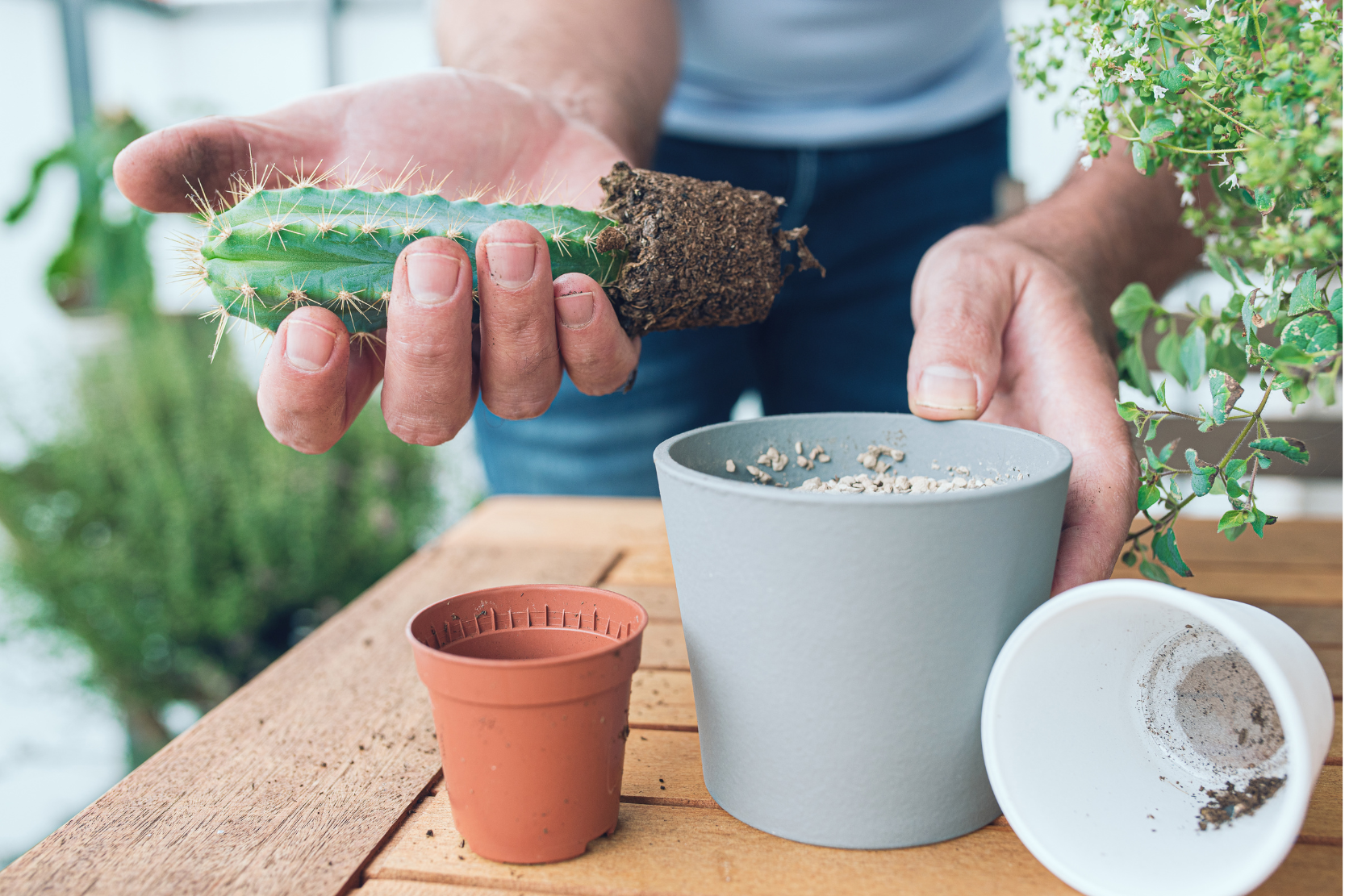
Conclusion
Flowering cacti are a fantastic choice for anyone looking to bring a touch of nature indoors without the hassle of high-maintenance plants. With their stunning blooms and low-water needs, they are perfect for both novice and experienced plant owners. By following the tips in this guide, you can enjoy vibrant, flowering cacti with minimal effort, making them a beautiful and easy addition to your home.
Remember, the key to success is providing the right light, watering carefully, and offering your cactus the chance to rest during the winter. With these simple practices, you’ll soon have a thriving collection of flowering cacti that brighten up your indoor space with color and life.
FAQs
1. How often should I water my indoor cactus?
Most indoor cacti should be watered every 2-4 weeks. Let the soil dry out completely between waterings to prevent root rot. During the winter months, you can reduce watering even further, as cacti go into a dormant phase.
2. Why isn’t my cactus blooming?
If your cactus isn’t blooming, it may need more sunlight or a rest period in cooler temperatures. Ensure your cactus gets plenty of indirect light, and consider reducing watering and temperature in the winter to trigger blooming.
3. Can I propagate my cactus?
Yes! Many cacti, especially species like the Christmas Cactus, can be propagated from cuttings. Simply cut a healthy piece, let it dry for a few days, and then plant it in well-draining soil. With proper care, the cutting will root and grow into a new plant.
4. Do all cacti flower?
While all cacti are capable of flowering, not all will bloom indoors, and some may take years to flower. Providing the right care—such as plenty of light, proper watering, and a rest period in winter—can encourage indoor cacti to bloom more readily.
5. What is the best light for indoor cacti?
Most indoor cacti prefer bright, indirect light. South or west-facing windows are ideal, but be careful not to expose your cactus to direct sunlight for extended periods, as this can cause sunburn. If you don’t have enough natural light, consider using a grow light to supplement the light your cactus needs.










